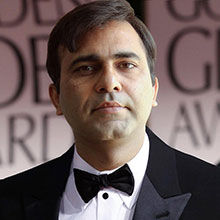Electronic commerce (e-commerce) is increasingly discussed and written about in today's knowledge-based economies. Although there are currently no internationally agreed-upon definitions of e-commerce, the OECD (Organization for Economic Co-operation and Development) defines e-commerce transactions as: the sale or purchase of goods or services, whether between businesses, households, individuals, governments, and other public or private organizations, conducted over computer-mediated networks. The goods and services are ordered over those networks, but the payment and the ultimate delivery of the good or service may be conducted on or off-line. The concept of e-commerce extends into communications, promotion, customer service, statistics, and usage patterns. However, often overlooked when examining e-commerce acceptance or failure is the social and cultural impact of conducting conventional business transactions over the Internet.
The absence of an agreed-upon definition for e-commerce creates a challenge when comparing e-commerce modalities in different countries. For some people, e-commerce is limited to credit-card transactions that take place over the Internet. For others, e-commerce means using any electronic device to purchase goods or services. The entire e-commerce process is complex and requires meticulous and well-informed planning to succeed. Businesses need to look beyond issues such as what products and services to offer, how to design and maintain a portal, and how to handle security issues. They must closely examine less tangible, but equally important issues, such as social and cultural norms in the region; sustainable funding strategies, and the formation of strategic partnerships.
E-commerce can be divided into primarily three categories:
Business to Consumer (B2C): where enterprises sell directly to the consumer, often cutting out (disintermediating) wholesalers or bricks and mortar retail outlets. B2C is the most commonly understood form of Internet business as typified by the on-line retailers such as the bookseller and general retailer Amazon (www.amazon.com) ,whom some credit with inventing e-commerce. The most successful B2C trading has been with standard products such as cds, books, software, downloadable music etc. Many high-profile companies, such as Amazon and Yahoo! however have yet to make a profit, even in the USA, where e-commerce is most advanced.
Business to Business (B2B): where enterprises use ICT22and the Internet to enhance the whole range of business to business activities. This includes procurement of raw materials and supplies, liaison with contractors and sales channels, servicing customers collaborating with partners, integrated management of data and knowledge, etc. B2B activities can take place across both public networks (such as the Internet) and private systems. Because companies purchase in much greater quantities than consumers, B2B is expected to be the fastest growing sector of e-commerce, accounting for 80% by 2005.
Business-to-government (B2G): where businesses trade directly with government offices and agencies for public procurement (eg supplies for hospitals, schools and other government contracts).
India: Direct Marketing of Artisanal Products for example Indiasocial.org uses information and communications technologies (ICTs) to create a bridge between artisanal clusters in India and their potential markets. These previously isolated groups can now build on local knowledge and use ICTs to develop a comprehensive, cost-effective way to market their products globally. Four clusters of artisans participated in this pilot project.
The report outlines the steps taken by Indiasocial.org to introduce e-commerce to these isolated communities and discusses some of the project’s successes and failures. Four pilot sites have been established
▪ http://www.moradabadcluster.org
▪ http://www.saharanpurcluster.org
▪ http://www.chandericluster.org
▪ http://www.firozabadcluster.org
I hope the future of e-commerce will bring all talented artisans in remote villages to a global platform, which serves them more practically and can emerge as one of the most crucial aggressive marketing effort.
About the author:
Deepak Singh has started working as national designer to various prestigious government projects for the last nine years. He is the Indian design counterpart of PJ Aranador for several years. Since the inception of the program, Deepak has coordinated its vital activities nationally & internationally. He is graduate of design from NIFT & has widely traveled for various EPCH design missions & exhibitions in Germany, Hong Kong, Thailand and China. He has worked on several projects with various international designers from Germany, USA & Japan.
To read more articles on Textile, Fashion, Apparel, Technology, Retail and General please visit www.fibre2fashion.com/industry-article/







Comments